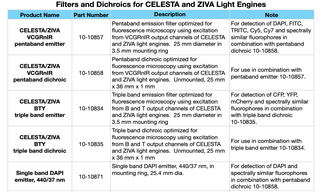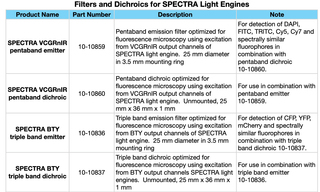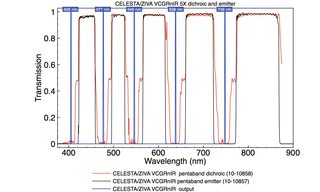In fluorescence microscopy, the filter set, consisting of excitation and emission bandpass filters and a dichroic beamsplitter, plays a critical role. It performs the essential functions of directing excitation light from the light source to the sample and then separating it on the basis of wavelength, from fluorescence emitted from the specimen. The filter set consists of excitation and emission bandpass filters and a dichroic beamsplitter. Optimized filter sets are critical because fluorescence emission from a microscopic specimen is many orders of magnitude (>106) weaker than the excitation from the light source. Recognizing optimized filter set specifications are critical for obtaining images with high signal:background contrast. Lumencor has developed uniquely high performance, multiband dichroic beamsplitters and multiband and single band emission filters for use with our SPECTRA, CELESTA, and ZIVA Light Engines. These Light Engines are setting the standard for high performance, high brightness, turn-key solutions in solid-state lighting for life and industrial sciences.




The multiband emitters and dichroics are optimized for compatibility with the electronically selectable excitation outputs of SPECTRA, CELESTA, and ZIVA Light Engines (Figure 1). This enables fast multicolor imaging without the need for filter wheels or other positioning devices to execute filter interchanges. Single bandpass filters are offered for use in situations where fluorescence crosstalk (e.g. detection of FITC fluorescence derived from violet (DAPI) excitation) confounds identification of fluorescently labeled components of the specimen.

Figure 1. Transmission spectra of CELESTA/ZIVA VCGRnIR pentaband dichroic and emitter superimposed on the violet, cyan, green, red, and near-infrared output lines of the CELESTA and ZIVA Light Engines.



